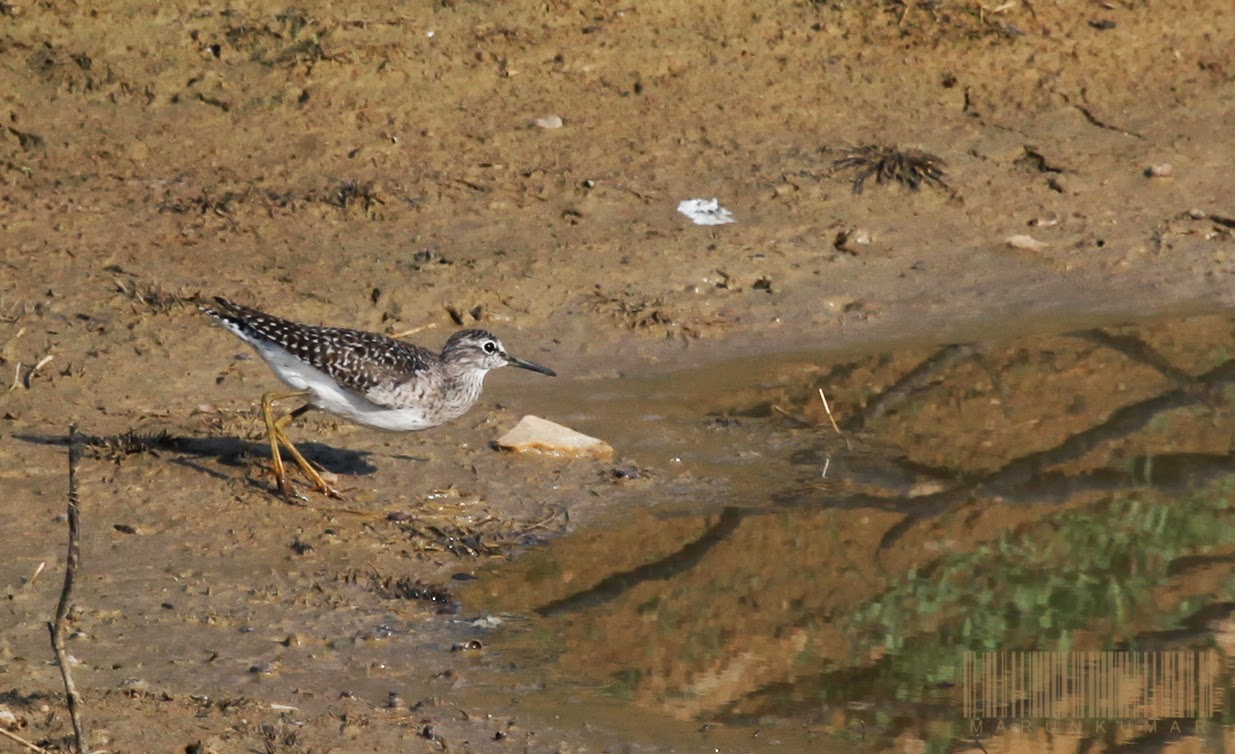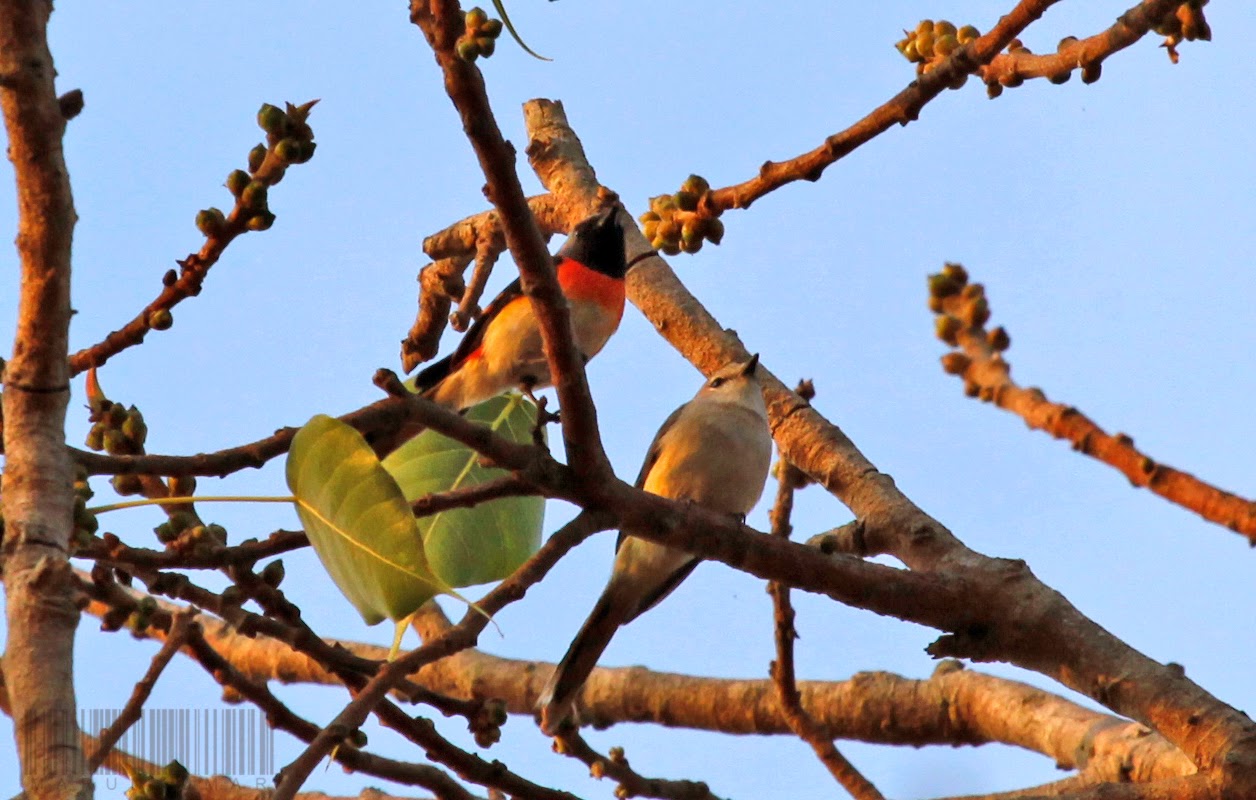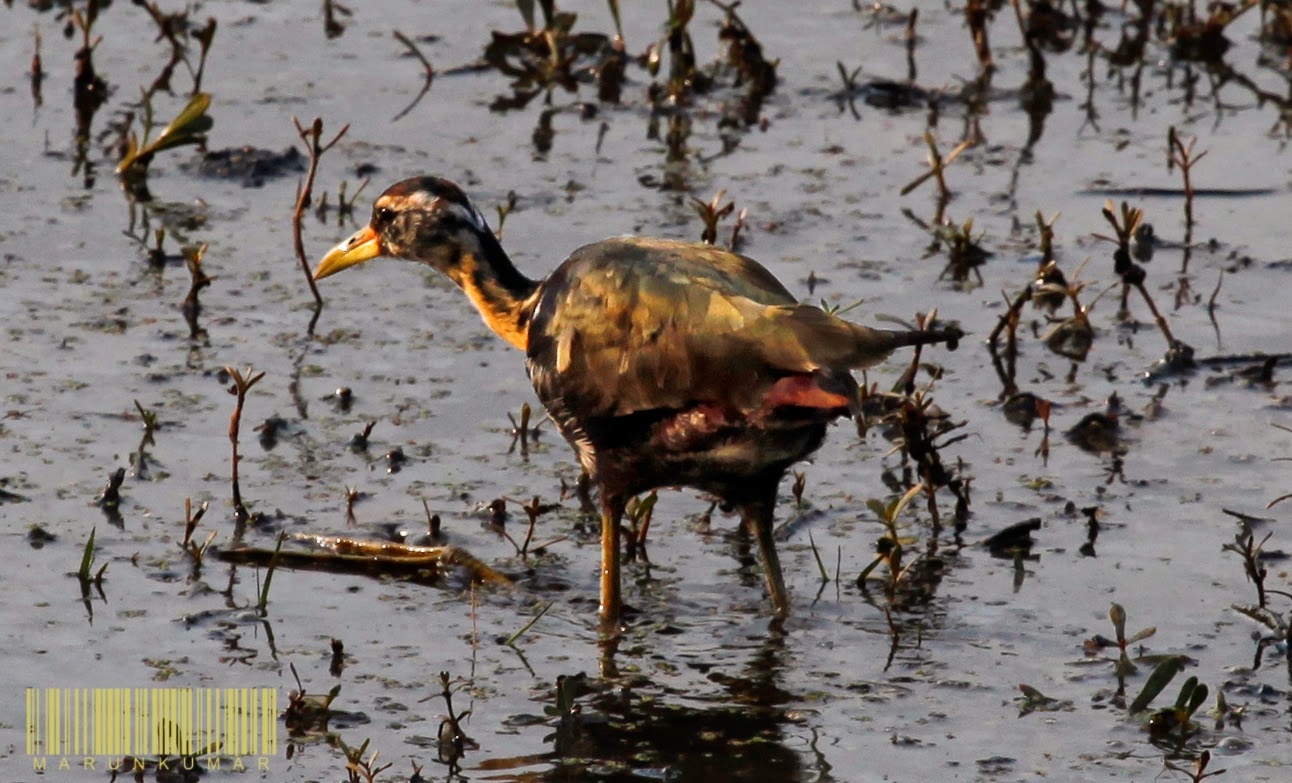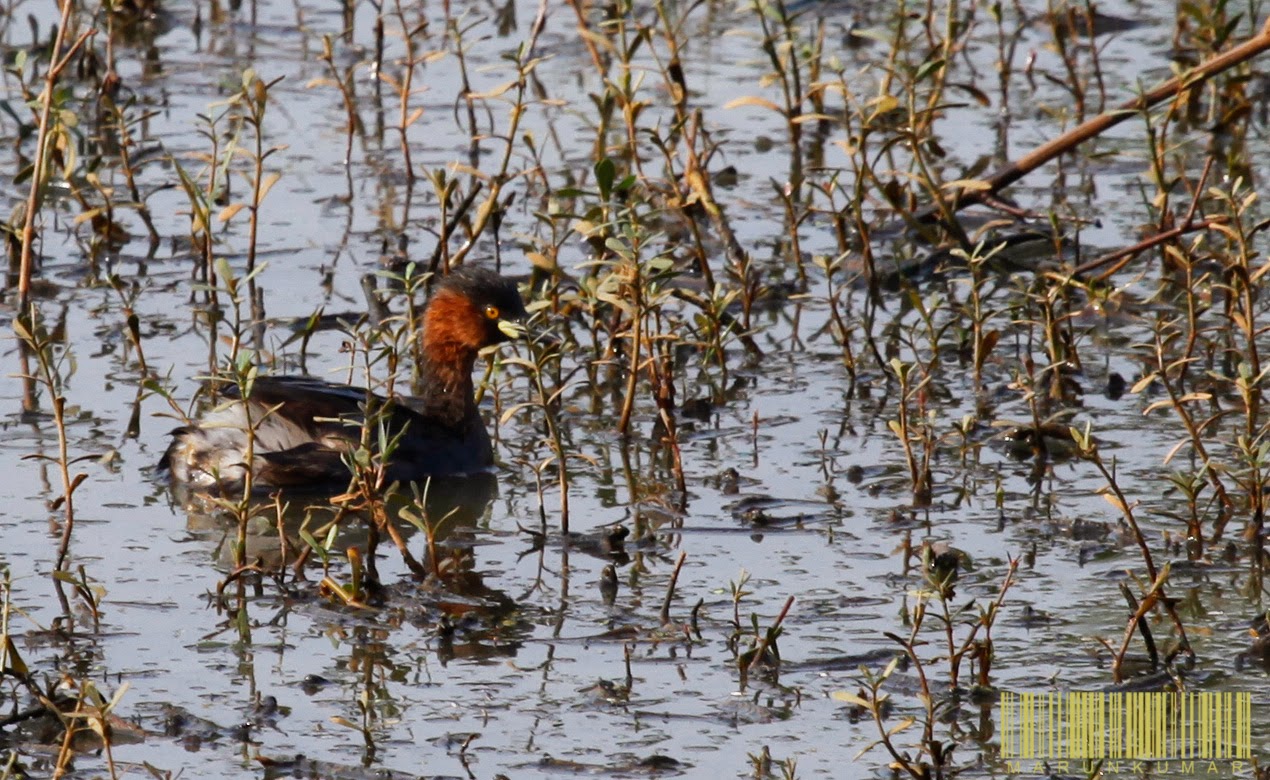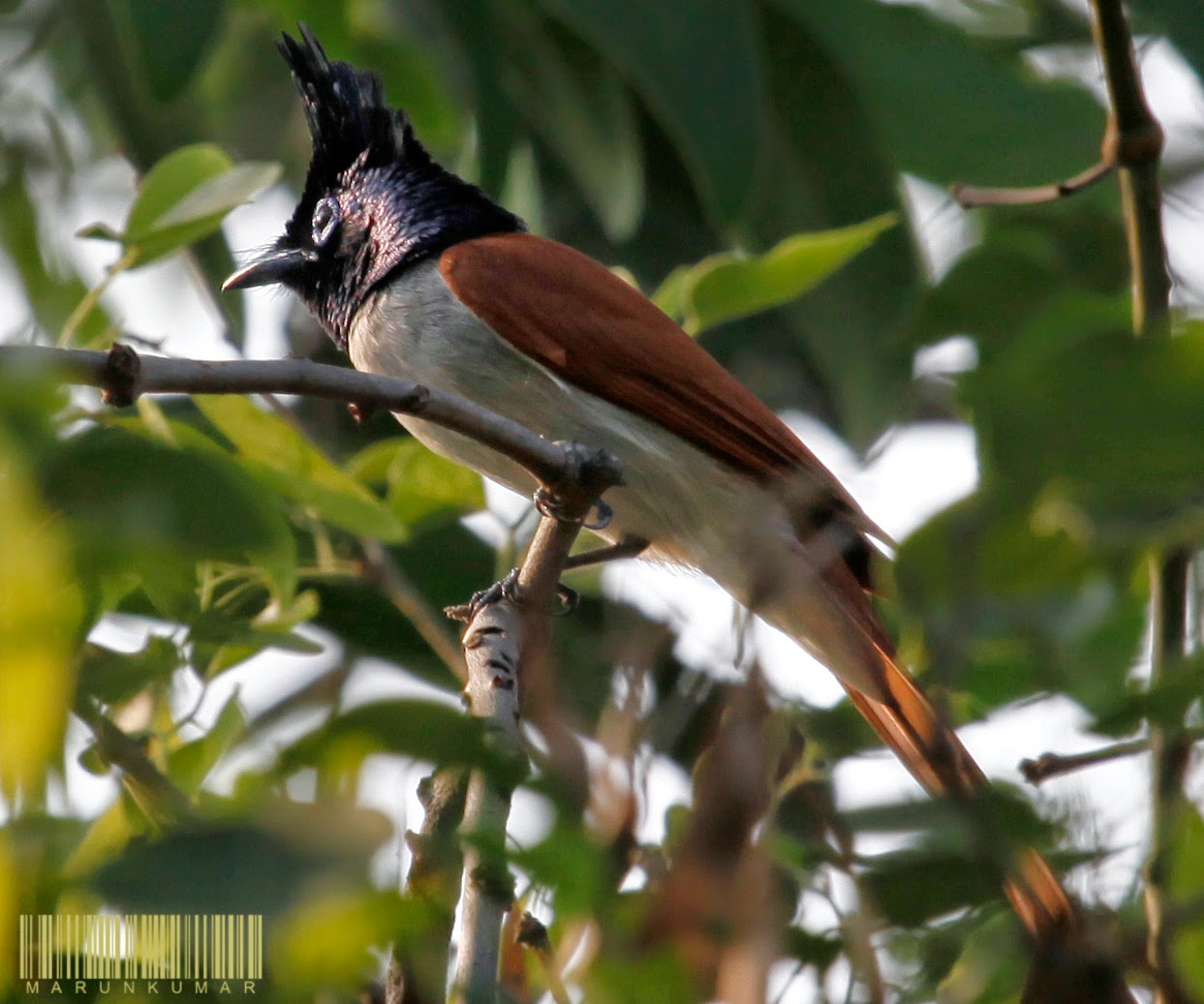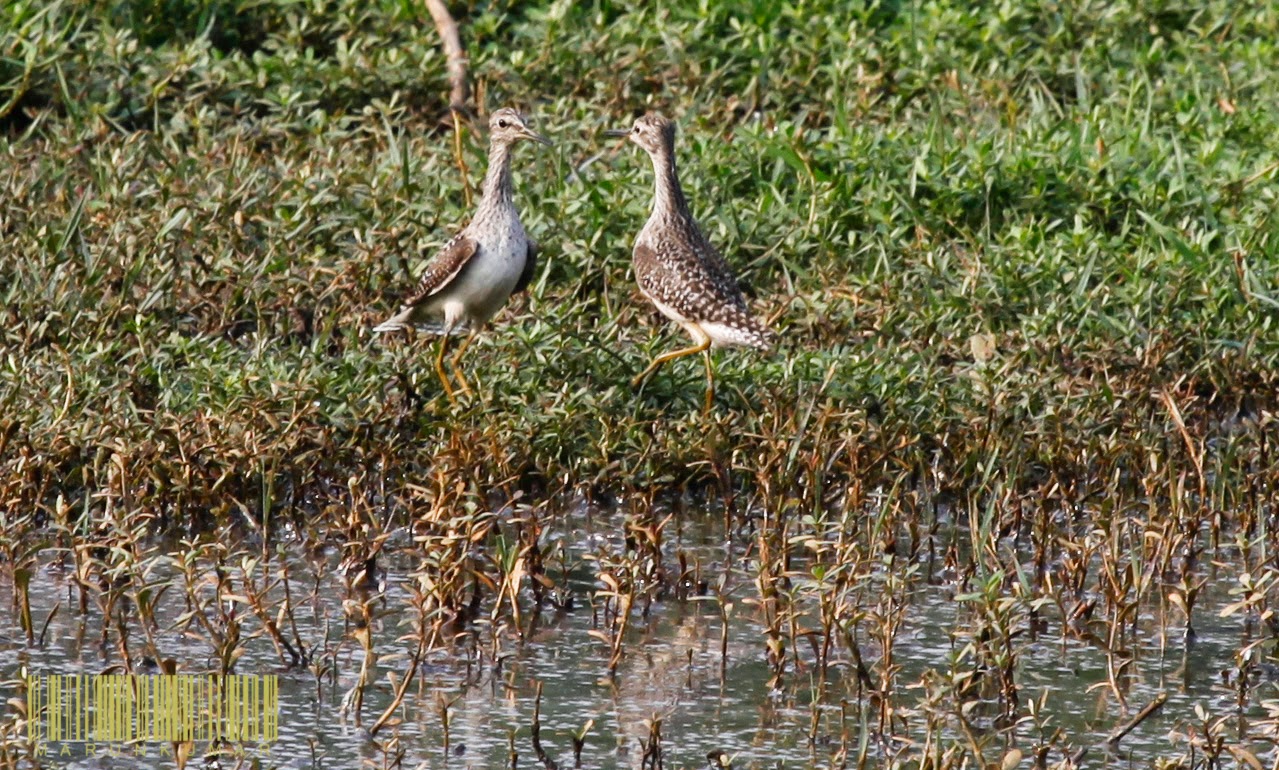27 April, 2014
20 April, 2014
2014 | 110 | 20Apr14 | Hulimangala
| 10. Grey Heron (Ardea cinerea) - Male ID by Wikipedia : Plumage is largely grey above, and off-white below. Adults have a white head with a broad black supercilium and slender crest, while immatures have a dull grey head. It has a powerful, pinkish-yellow bill, which is brighter in breeding adults. It has a slow flight, with its long neck retracted (S-shaped). This is characteristic of herons and bitterns, and distinguishes them from storks, cranes and spoonbills, which extend their necks. |
| 11. Common Skittering Frog - Euphlyctis Cyanophlyctis ID by Wikipedia : This species have the remarkable ability to leap from a floating position out of the water. |
| 12. Common Skittering Frog - Euphlyctis Cyanophlyctis ID by Wikipedia : This species have the remarkable ability to leap from a floating position out of the water. |
| 13. Common Skittering Frog - Euphlyctis Cyanophlyctis ID by Wikipedia : This species have the remarkable ability to leap from a floating position out of the water.
|
11 April, 2014
09 April, 2014
SDHC / SD to Compact Flash CF Type II Card Adapter New
10 days back I bought a CF (Compact Flash) adapter for my Canon 5D Mark ii from EBAY.
Costing approx INR 1000.
Now I'm using this as a replacement for my regular CF.
Earlier 8GB CF costed me around Rs 1800/-.
But now I'm using my 16GB SD card, 16GB micro SD.
Tested during last Sunday birding perfornmace is very good. Nice product.
Worth the money paid.
For how to fix the card, watch my video
06 April, 2014
Subscribe to:
Comments (Atom)

